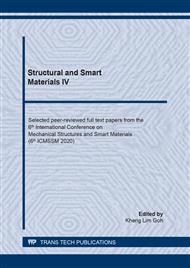p.8
p.13
p.23
p.32
p.41
p.49
p.55
p.60
p.68
Investigation Toiler Weld Blank of SSM 2024 Aluminum Alloys by Friction Stir Welding Joint
Abstract:
The objective of this research was to investigate variables that affected the adhesion of the welded joints for TWBs with FSW in the SSM 2024 aluminum alloys. The results clearly showed that there was a good adhesion of the samples in every experiment. Longitudinal voids can also been found on the top surface of some variables. The average size of cross-links structure of Al2Cu phase (β phase) in SZ, broken into smaller pieces, was around 4 to 7 μm and evenly mixed with alpha phase (α phase). The effect of fracture of Al2Cu phase promoting better mechanical properties. The appropriate tensile strength from the experiment came from variables at the work angle at 15o, rotation speed at 2720 rpm, and welding speed 60 mm/min which provided maximum tensile strength value at 205.0 MPa and the maximum average hardness at 132.4 HV, higher than the weld region. The assessment results showed that the differences in welding variables resulted in different mechanical properties.
Info:
Periodical:
Pages:
41-48
Citation:
Online since:
February 2021
Authors:
Price:
Сopyright:
© 2021 Trans Tech Publications Ltd. All Rights Reserved
Share:
Citation:


